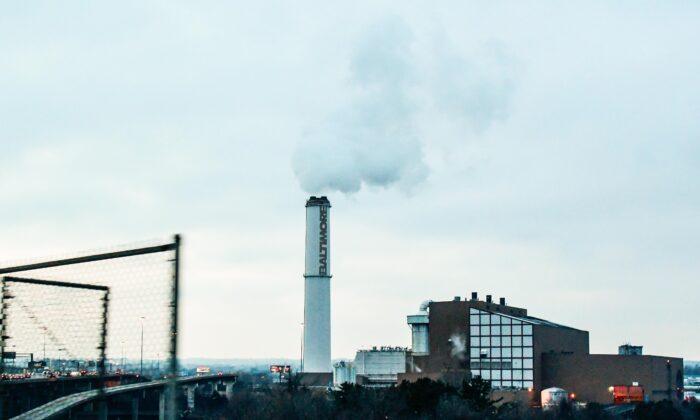The ALA published its 2023 “State of the Air” report on Wednesday, finding that after decades of progress in reducing air pollution, about 36 percent of the U.S. population still lives in areas with “unhealthy levels of ozone or particle pollution.” In total, about 119.6 million people currently live in areas with failing grades for air quality, which is about 17.6 million fewer people breathing unhealthy air compared to ALA’s 2022 “State of the Air” report.
The ALA warns that poor air quality can expose people to several adverse health effects and shorten their life span.
“Years of scientific research have clearly established that particle pollution and ozone are a threat to human health at every stage of life, increasing the risk of premature birth, causing or worsening lung and heart disease, and shortening lives,” the ALA said. “Some groups of people are more at risk of illness and death than others because they are more likely to be exposed, or are more vulnerable to health harm, or often both.”
The ALA attributed the reduction in the number of people dealing with unhealthy pollution levels to reductions in ozone achieved by the Clean Air Act. However, the ALA said 63.7 million people are exposed to dangerous particle pollution levels, a record high for that type of pollution.
The Most Polluted Cities
The ALA report included lists of the least and most polluted metropolitan areas based on ozone levels and short-term and year-round particle pollution.- Los Angeles-Long Beach, CA
- Visalia, CA
- Bakersfield, CA
- Fresno-Madera-Hanford, CA
- Phoenix-Mesa, AZ
- Denver-Aurora, CO
- Sacramento-Roseville, CA
- San Diego-Chula Vista-Carlsbad, CA
- Houston-The Woodlands, TX
- Salt Lake City-Provo-Orem, UT
- Albany-Schenectady, NY
- Asheville-Marion-Brevard, NC
- Bangor, ME
- Bellingham, WA
- Blacksburg-Christiansburg, VA
- Bowling Green-Glasgow, KY
- Brownsville-Harlingen-Raymondville, TX
- Brunswick, GA
- Burlington-South Burlington-Barre, VT
- Charleston-Huntington-Ashland, WV-OH-KY
Particle Pollution Impacting Western States
The ALA report observed a growing disparity in particle pollution levels in eastern and western states.When the ALA first added particle pollution findings to its annual “State of the Air” report in 2004, a total of 106 counties in 30 states had failing grades for daily spikes in particle pollution levels, of which 44 counties, fewer than half, were located in eight states west of the Rocky Mountains. In this year’s report, there were 111 counties in 19 states with failing grades for particle pollution levels, and all but eight of those counties were located in western states.
What the ALA Wants
The ALA shared several recommendations for improving air quality and reducing pollution. Those recommendations included calls for individuals to stop using gas-powered vehicles and appliances and avoid burning wood. At the federal level, the ALA calls for the U.S. Environmental Protection Agency (EPA) to set increasingly strict emissions standards “that transition the nation’s cars and trucks to zero-emission vehicles.”Skeptics of phasing out gas-powered vehicles have expressed concerns that regulations to bring about such a transition will disproportionately impact low-income consumers.
The EV industry is working on expanding the charging infrastructure around the country. President Joe Biden announced in February that several EV companies and rental car brands plan to expand access to vehicle charging stations. Tesla has agreed to make at least 7,500 chargers in its national charging network available to other EVs by the end of 2024.





